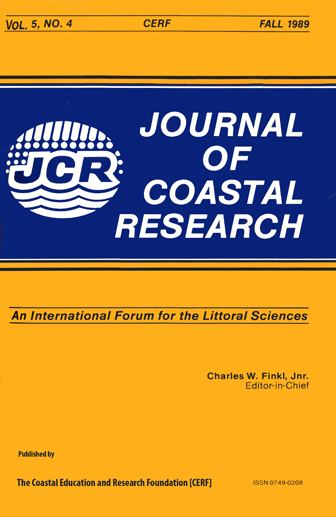Sediment Transport on the Coast and Shelf Between the Nile Delta and Israeli Margin as Determined by Heavy Minerals
Keywords:
Arab's Bay, High Aswan Dam, IA mph index, IPyr index, Israeli shelf, Nile delta shelf, relict sediments, Sinai shelfAbstract
The main source of terrigenous sediments supplied to the southeastern Mediterranean margin was the River Nile until the emplacement of the High Aswan Dam in 1964. It is generally assumed that since cut-off of this supply, sediments eroded from the Nile delta have continued to be displaced eastward to the Sinai and Gaza margins and north-northeastward to the Israeli margin. Sands are displaced along coasts primarily by wave-driven longshore transport. This study of the regional distribution of transparent heavy minerals indicates that mineral suites on coasts east of the Bardawil lagoon differ increasingly from Nilotic suites in a direction away from the Nile delta. This records an incorporation of sediments supplied locally from coastal and inshore erosion, and also from rivers and by wind. In contrast, proportions of transparent heavy minerals in the sand fractions on continental shelves off the Nile delta, Sinai, Gaza and Israel more closely approximate those of the Nile delta. These mineral assemblages in shelf sediments are likely derived from relict or reworked relict (palimpsest) deposits, or both, of Nilotic origin. Offshore sediment displacement by bottom currents is probably episodic, involving storm wave activity coupled with more constant flow of the geostrophic East Mediterranean Current. As the number of engineering structures placed along coasts increases, the volume of laterally transported Nilotic sand has decreased somewhat relatively to locally supplied sediment. Thus, in time, the composition of heavy mineral suites on eastern Sinai, Gaza and Israeli coasts may differ from Nile delta assemblages. Moreover, the divergence between proportions of heavy minerals on coasts and contiguous shelves would also be expected to increase. Data points summarized in the present study are largely from samples collected prior to 1964 and thus provide a pre-Aswan High Dam baseline. Recommended systematic resampling of the margins and analyses of heavy minerals one quarter-Century after closure of the High Aswan Dam would help measure recent sedimentation changes and predict future modifications likely to affect these margins.


